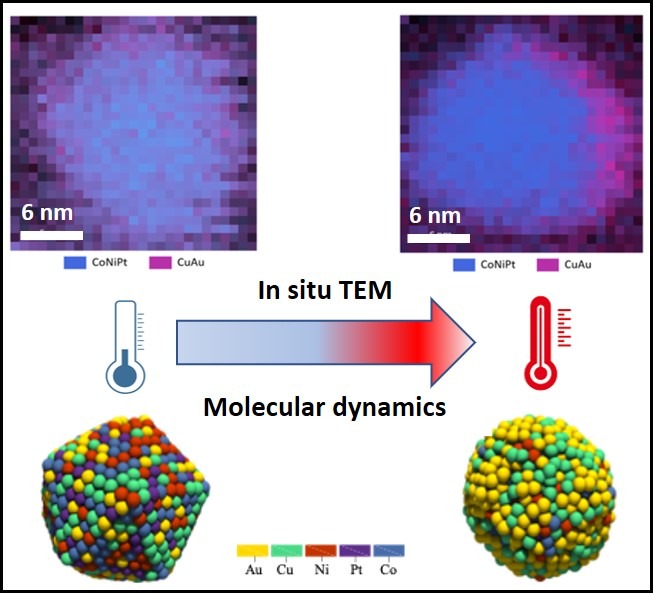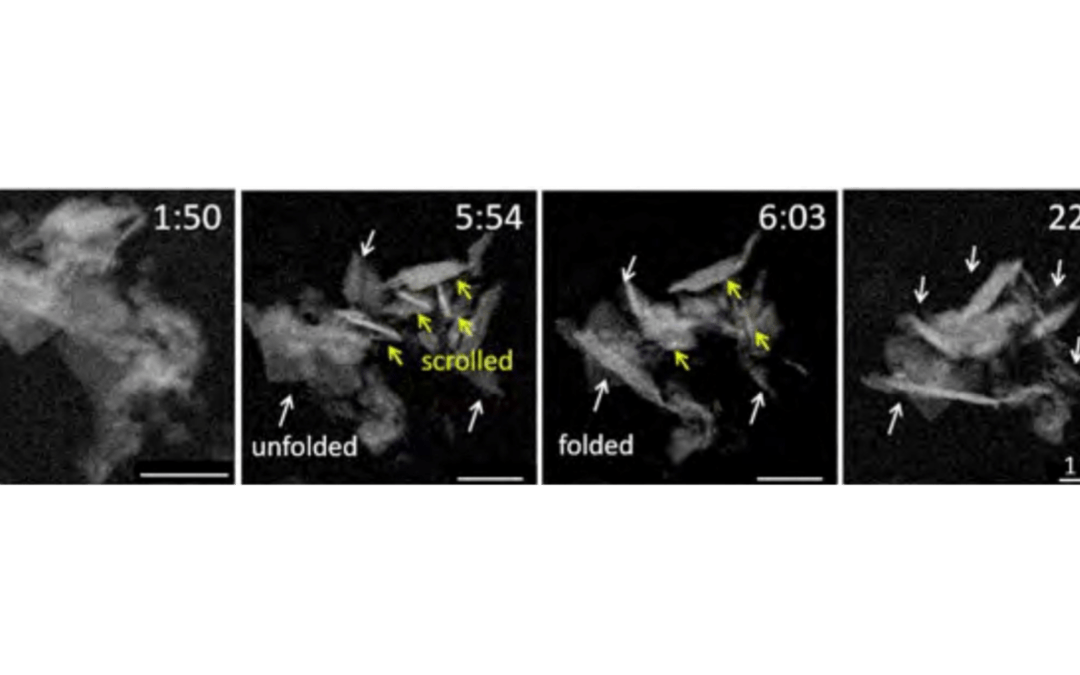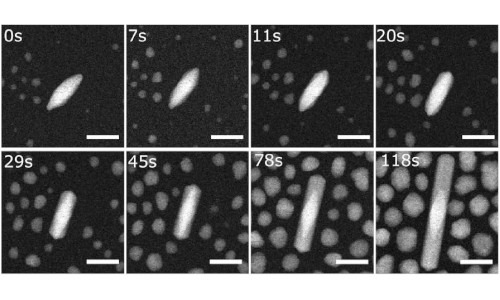Advanced Electron Microscopy and Nano-Structures (MEANS)
The development of efficient nanotechnologies requires fabricating nanomaterials with controlled size, shape, composition and atomic structure, and determining if and how these structural parameters change over time. Therefore, understanding the dynamics of nanostructures in their formation and application media is a crucial challenge for materials science. In that regard, the MeANS group develops bottom-up synthesis routes and electron-microscopy techniques to study the growth, transformation or degradation processes of nanomaterials at the atomic scale in near realistic conditions.

For more than 10 years, we have been interested in many promising nanosystems for sustainable developments and biomedical applications and our research is built around 4 topics:
- Synthesis and thermodynamic properties of nanoalloys
- Nucleation & growth of nanomaterials in liquid phase
- Structure and reactivity of nanoalloys
- Life-cycle of nanomaterials in biological and natural media
In situ insights are often necessary to understand the complex physicochemical interactions of nanomaterials with their environment. Since 2014, we have exploited close-cell transmission electron microscopy to follow the behavior of nano-objects in liquid and gaseous media of controlled composition and temperature. This major breakthrough in electron microscopy allows exploring new frontiers in nanofabrication, catalysis, electro-chemistry but also in biology and environmental sciences. Liquid and gas-cells are used on an JEOL aberration-corrected microscope: The SUPER TEM. As a user facility, this new generation of instrument is open to the scientific community through the Paris Diderot University Platform for advanced TEM and the METSA national network, in order to maximize the impact of electron microscopy on the atomic-scale characterization of materials. The expertise of the MeANS group in electron microscopy has already opened the door to many collaborations with the view to establish the link between the structure and the properties of materials or to study their fate in their application media.
À lire aussi

Thermal stability of high-entropy nanoalloys: reality or chimera?
By studying at the atomic scale the thermal behavior of nanoparticles composed of gold, cobalt, copper, nickel and platinum, scientists have revealed that the stability of these so-called high-entropy nanoalloys is much lower than expected, as gold and copper...

Neutralization of nanoparticles in lung cells
How does the body react to inhaled nanoparticles? In a collaboration involving researchers from the MEANS team at the MPQ laboratory, the evolution of molybdenum disulfide nanosheets in mouse lungs has been monitored for up to one month after inhalation....

Revealing the secrets of anisotropic nanoalloy synthesis
The synthesis of nanomaterials by chemical routes has long been developed empirically due to the lack of techniques to probe the dynamics of nano-objects in liquid media. In recent years, so-called "in-situ" approaches have emerged on all the techniques that allow...
